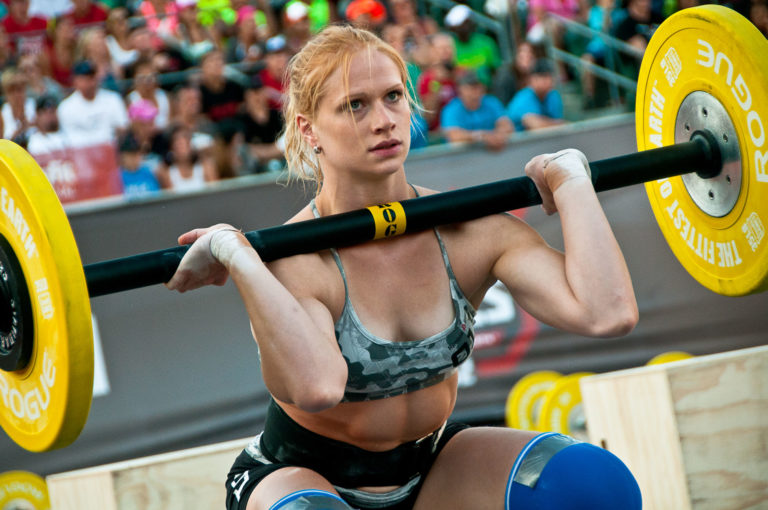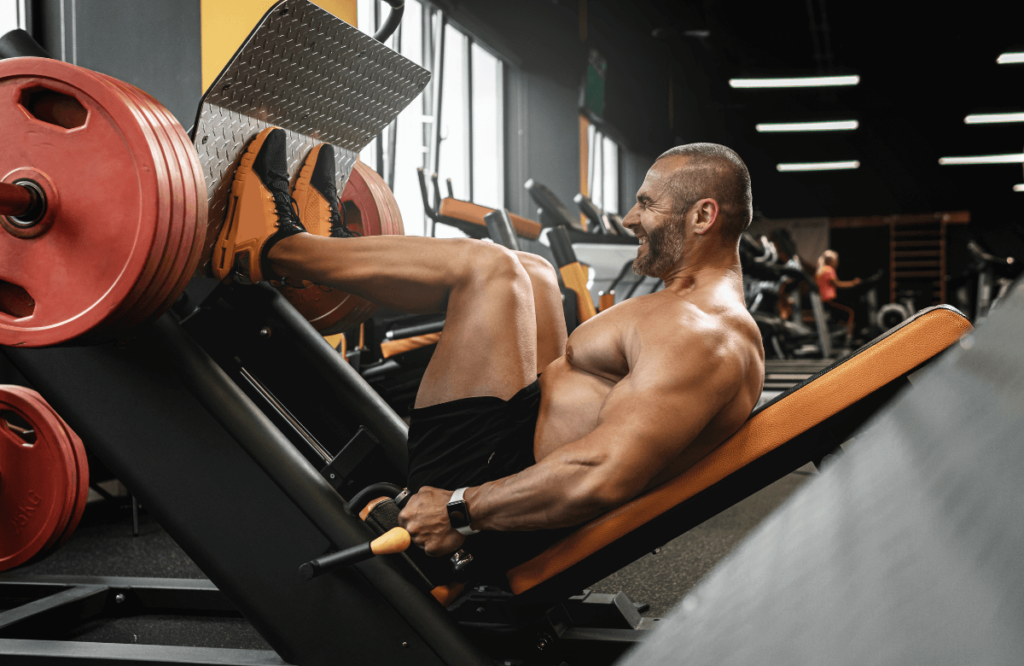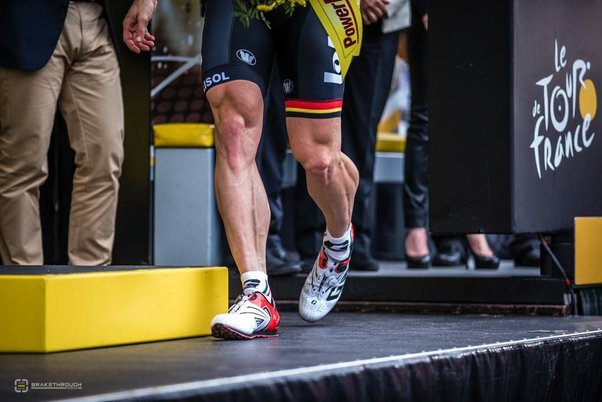Address
304 North Cardinal
St. Dorchester Center, MA 02124
Work Hours
Monday to Friday: 7AM - 7PM
Weekend: 10AM - 5PM
Address
304 North Cardinal
St. Dorchester Center, MA 02124
Work Hours
Monday to Friday: 7AM - 7PM
Weekend: 10AM - 5PM

Building strong and defined quadriceps (the muscles on the front of your thighs) requires a combination of exercises that target them effectively. Here are some of the best exercises for building quadriceps:
Remember to vary your exercises, rep ranges, and resistance to continually challenge your muscles and promote growth. Additionally, always prioritize proper form and technique to prevent injury and maximize results. If you’re new to weightlifting or unsure about how to perform these exercises safely and effectively, consider working with a certified personal trainer.

When using barbell squats to build mass in your quadriceps, it’s crucial to consider frequency, reps and sets, recovery periods, and foot placement.
By incorporating these considerations into your barbell squat routine, you can effectively target your quadriceps and stimulate muscle growth. Always prioritize proper form, listen to your body, and adjust your training variables as needed to optimize results and minimize the risk of injury

Feet placed lower isolates quads
To optimize quad strength with the leg press machine, follow these steps:
Begin by setting up the leg press machine correctly. Adjust the seat and backrest so your knees are at a comfortable angle when you bend them. Your feet should be placed shoulder-width apart or slightly wider on the footplate, ensuring they’re positioned squarely and not too high or too low. Keep your back firmly pressed against the backrest throughout the exercise.
Focus on achieving a full range of motion with each repetition. Lower the weight until your knees are bent to approximately 90 degrees or slightly beyond, without allowing them to collapse inward. Avoid locking out your knees at the top of the movement to maintain tension on the muscles.
Experiment with different foot placements to target various areas of the quadriceps. Placing your feet higher on the footplate may emphasize the glutes and hamstrings, while placing them lower targets the quadriceps more directly. Similarly, adjusting the width of your stance can impact muscle recruitment, with a narrower stance focusing more on the outer quads and a wider stance targeting the inner quads.
Perform each repetition with control, avoiding jerky or explosive movements. This ensures that the quadriceps muscles are effectively engaged throughout the entire range of motion and reduces the risk of injury.
Gradually increase the weight you lift over time to continually challenge your muscles and promote strength gains. However, ensure you can maintain proper form and complete the desired number of repetitions with each set before increasing the weight.
Incorporate leg press exercises into your workout routine with an appropriate volume and intensity. Aim for 3-5 sets of 6-12 repetitions, adjusting the weight and rep range based on your individual goals and fitness level.
Allow adequate rest between sets to promote muscle recovery and prevent fatigue-induced loss of form. Rest periods of 1-2 minutes are typically sufficient for strength-focused training.
Consider incorporating variations of the leg press exercise, such as single-leg presses or unilateral leg presses, to address any muscle imbalances and provide additional stimulation to the quadriceps.
By following these steps and incorporating the leg press machine into your strength training routine, you can effectively build quad strength and muscle mass. Always prioritize proper form, listen to your body, and consult with a qualified fitness professional if you’re unsure about how to perform the exercise safely and effectively.

To perform lunges correctly and effectively target your quadriceps, follow these steps:
By following these steps and focusing on proper form, you can perform lunges correctly to effectively target your quadriceps and other lower body muscles. As with any exercise, start with a lighter weight or no weight at all until you feel comfortable with the movement, and gradually increase the intensity as you build strength and confidence.

Leg extensions are a popular isolation exercise used to target the quadriceps muscles. This exercise involves sitting on a leg extension machine with your legs positioned under padded levers. As you extend your legs against resistance, the quadriceps contract, working to straighten the knees.
Leg extensions are often praised for their ability to isolate and target the quadriceps effectively. Many bodybuilders and fitness enthusiasts incorporate leg extensions into their leg workouts to build size and definition in the quads.
Ronnie Coleman, a legendary bodybuilder, emphasized the importance of leg extensions in his training routine, stating, “The leg extension is the best way to shape your quads. It really isolates the muscle and gives you that peak at the top.” Coleman’s endorsement of leg extensions highlights their effectiveness in targeting and shaping the quadriceps.
Arnold Schwarzenegger
I always like to finish my quadriceps routine with leg extensions. It really burns the quads and gives them that extra pump
Another renowned bodybuilder, Arnold Schwarzenegger, also recognized the value of leg extensions in building impressive quadriceps. Schwarzenegger once said, “I always like to finish my quadriceps routine with leg extensions. It really burns the quads and gives them that extra pump.”
These endorsements from prominent bodybuilders underscore the role of leg extensions in building strong, well-developed quadriceps. By isolating the quadriceps and providing a focused contraction, leg extensions can help enhance muscle definition and shape in the front of the thighs.
However, it’s important to note that leg extensions should be performed with proper form and technique to minimize the risk of injury. Excessive weight or incorrect alignment can place undue stress on the knees, so it’s crucial to start with a manageable weight and gradually increase as strength improves.
Incorporating leg extensions into a comprehensive leg training routine, along with compound exercises like squats and lunges, can provide a balanced approach to quad development. As with any exercise, it’s essential to listen to your body, prioritize safety, and adjust the exercise to suit your individual fitness level and goals.

Step-ups offer significant benefits for the quadriceps, making them a valuable addition to lower body workouts. These exercises provide isolation for the quadriceps, targeting them directly as you lift your body weight onto a platform. Through a full range of motion, step-ups engage the quadriceps, ensuring comprehensive muscle activation.
Their unilateral nature addresses muscle imbalances between the left and right quadriceps, fostering balanced strength development. Step-ups also promote stabilization and balance, particularly with dynamic variations or when using free weights. By mimicking everyday movements like climbing stairs, they enhance functional strength and mobility.
Step-ups can be tailored to various fitness levels, with options for progression by adjusting platform height or adding weight. Their low-impact nature makes them accessible to individuals of different abilities, contributing to lower body strength, stability, and mobility. Integrating step-ups into your routine can foster strong, well-developed quadriceps while improving overall lower body strength and functional movement patterns.

Both the hack squat and the leg press are effective exercises for targeting the quadriceps, but they have some differences in terms of mechanics, muscle engagement, and overall benefits.
The hack squat is a compound exercise that primarily targets the quadriceps, hamstrings, and glutes. It involves standing on a platform with a shoulder pad behind you and squatting down while keeping your back against the pad. The movement resembles a traditional squat but with the weight distributed behind the body. This exercise places significant emphasis on the quadriceps, particularly the vastus lateralis and vastus medialis, while also engaging the hamstrings and glutes to a lesser extent. The hack squat may be beneficial for individuals with lower back issues, as it provides support for the spine throughout the movement.
On the other hand, the leg press is a machine-based exercise that isolates the quadriceps, with less involvement of the hamstrings and glutes compared to the hack squat. It involves sitting on a padded seat and pushing a weighted platform away from the body using the legs. The leg press allows for a more controlled movement and may be suitable for individuals who struggle with balance or stability. However, some argue that the leg press puts more stress on the knees due to the fixed movement pattern and the potential for the pelvis to tilt, which may increase the risk of injury if proper form is not maintained.
In terms of muscle engagement, both exercises effectively target the quadriceps but may emphasize slightly different areas of the muscle depending on factors such as foot placement and range of motion. The leg press may allow for greater weight to be lifted compared to the hack squat, as it involves a more stabilized movement pattern and reduces the need for core stability.
Overall, both the hack squat and the leg press can be valuable additions to a lower body workout routine. The choice between the two exercises may depend on individual preferences, training goals, and any existing injuries or limitations. Experimenting with both exercises and incorporating them strategically into your routine can help optimize quadriceps development and overall lower body strength.

Bulgarian split squats offer a variety of benefits for lower body strength, stability, and muscle development. One notable advantage is their unilateral nature, which means they are performed one leg at a time. This focus on unilateral strength helps address muscle imbalances between the left and right sides of the body, promoting balanced strength development and reducing the risk of injury from asymmetries. By working each leg independently, Bulgarian split squats ensure that both sides of the body receive equal attention, leading to more symmetrical muscle growth and improved overall function.
Additionally, Bulgarian split squats primarily target the quadriceps, particularly the vastus lateralis, vastus medialis, and rectus femoris. The exercise involves significant knee extension, making it an excellent choice for building strength and muscle mass in the front of the thighs. The quadriceps are heavily engaged throughout the movement, helping to develop power and endurance in these crucial lower body muscles.
Furthermore, Bulgarian split squats also activate the glute muscles, including the gluteus maximus and gluteus medius. This dual muscle engagement not only strengthens the quadriceps but also enhances hip stability and overall lower body strength. The glutes play a vital role in various functional movements, and by targeting them with Bulgarian split squats, you can improve overall athleticism and performance.
Another benefit of Bulgarian split squats is their requirement for core stability. Maintaining balance during the exercise activates the core muscles, including the abdominals and obliques. This helps improve core strength and stability, which is essential for maintaining proper posture and preventing injury during other exercises and daily activities. Strengthening the core through Bulgarian split squats can also enhance overall athleticism and reduce the risk of lower back pain.
Moreover, Bulgarian split squats promote functional movement patterns that closely mimic common lower body activities like walking, running, and climbing stairs. By training with Bulgarian split squats, you improve functional strength and mobility, making it easier to perform everyday tasks and athletic activities with efficiency and ease. This functional carryover makes Bulgarian split squats a valuable addition to any workout routine, whether you’re a beginner or an experienced athlete looking to enhance performance and overall fitness.

Box jumps are a plyometric exercise that involves jumping onto and off of a raised platform, typically a sturdy box or plyometric box. The exercise is performed by starting in a squat position, then explosively jumping onto the box, landing softly with both feet on the platform. After landing, the individual either steps down or jumps back down to the starting position and repeats the movement for the desired number of repetitions.
Box jumps primarily target the lower body muscles, including the quadriceps, hamstrings, glutes, and calves. They also engage the core muscles for stabilization and balance. Additionally, box jumps are a high-intensity cardiovascular exercise that can help improve cardiovascular fitness and endurance.
One of the key benefits of box jumps is their ability to improve explosive power and athleticism. By repeatedly performing explosive jumps onto a raised platform, individuals can enhance their ability to generate maximal force in a short amount of time, which can translate to improved performance in activities such as sprinting, jumping, and agility-based sports.
Box jumps also help improve coordination, balance, and proprioception. The exercise requires precise coordination and timing to execute the jump onto the box and land safely on the platform. Over time, practicing box jumps can enhance these skills, leading to better overall athletic performance and reduced risk of injury during activities that require rapid changes in direction and quick movements.
Furthermore, box jumps can be easily adjusted to accommodate individuals of varying fitness levels and abilities. Beginners may start with a lower box height and gradually increase the height as they become more proficient and confident in their jumping ability. Advanced athletes can perform box jumps with higher box heights or add additional challenges, such as performing the jumps consecutively or incorporating other variations, such as single-leg box jumps or lateral box jumps.
Incorporating box jumps into a well-rounded training program can help individuals develop strength, power, and agility while providing a fun and dynamic way to challenge both the body and mind. However, it’s essential to perform box jumps with proper form and technique to reduce the risk of injury. Beginners should start slowly and focus on mastering the fundamentals before progressing to more advanced variations. Additionally, individuals with any pre-existing medical conditions or injuries should consult with a healthcare professional before attempting box jumps or any other high-impact exercise.

Wall sits are a static lower body exercise that involves holding a seated position against a wall for an extended period of time. To perform a wall sit, you start by leaning your back against a sturdy wall and sliding down until your thighs are parallel to the ground, forming a seated position. Your knees should be bent at a 90-degree angle, with your feet flat on the ground and shoulder-width apart. You then hold this position for a specified duration, typically ranging from 30 seconds to several minutes, depending on your fitness level and goals.
Wall sits primarily target the quadriceps, hamstrings, and glutes, making them an effective exercise for strengthening and toning the muscles of the lower body. By maintaining a static contraction in the seated position, wall sits help build muscular endurance, as the muscles must work continuously to support your body weight against gravity.
In addition to targeting the lower body muscles, wall sits also engage the core muscles, including the abdominals and obliques, to stabilize the body in the seated position. This helps improve core strength and stability, which is essential for maintaining proper posture and spinal alignment during everyday activities and athletic movements.
Wall sits are a versatile exercise that can be easily modified to suit individual fitness levels and goals. Beginners may start with shorter hold times and gradually increase the duration as they build strength and endurance. Advanced individuals can add intensity by holding weights or incorporating variations, such as single-leg wall sits or wall sits with an overhead press.
One of the key benefits of wall sits is their simplicity and accessibility. They require minimal equipment and can be performed almost anywhere with a sturdy wall, making them a convenient option for home workouts, office breaks, or outdoor training sessions. Additionally, wall sits are a low-impact exercise that places minimal stress on the joints, making them suitable for individuals of all fitness levels and abilities.
Incorporating wall sits into your regular workout routine can help improve lower body strength, endurance, and stability while promoting better posture and core strength. However, it’s essential to perform wall sits with proper form and technique to maximize effectiveness and reduce the risk of injury. Ensure that your knees are aligned with your ankles, and avoid letting your knees extend beyond your toes to prevent undue stress on the knee joints. Additionally, listen to your body and stop if you experience any pain or discomfort during the exercise.

Cycling is an excellent mass builder for the quadriceps due to several key reasons:
Overall, cycling is an effective mass builder for the quadriceps due to its ability to provide progressive resistance, time under tension, and muscular endurance, all while offering a low-impact and versatile form of exercise. By incorporating cycling into your fitness routine and varying your cycling workouts to include different intensities and modalities, you can effectively build mass and strength in your quadriceps muscles.